Without a doubt, the biggest attraction in Palau is the SCUBA diving. The waters surrounding the islands are some of the most diverse (if not the most) in the world. There are over 700 species of coral and 1,500 animals. I’m sure we didn’t see them all, but so many that each time we went in the water, it was like a visual overload.
Each dive was unique….we did 7 dives and 6 snorkels over the 4 full days we were there.
Monday morning, we met up with Brian George (an Air Force friend from Guam) who was in Palau for work. Rough job, huh? We got our gear set up and jumped on a small boat for the hour plus ride out to the dive sites.
Here’s a picture of the harbor at Sam’s Tours (our dive company):
Our first destination was Turtle Cove. It was a great site to start with. Tons of creatures, great visibility and a neat little cave to start off in.
The pictures I have of this dive are on a film camera, and the results leave something to be desired. I really wish I had a quality underwater digital camera.
This is a friend who decided to swim right up to me…It was early in the dive and I was fascinated by him. He shared my curiosity and swam right at me, only to turn away about 3 feet from my camera.
Not to worry though, it was relatively small (about 7 feet) and only a reef shark.
We also saw a number of turtles (which Anna loves).
With the thousands of fish we also saw, it was a great dive.
For lunch we stopped by a small island to have a picnic lunch (they are much more amenable to picnics than the Japanese were).
The afternoon, we went to German Channel. So named because while Germany controlled the islands from 1899-1917, they blasted a passage through the coral to facilitate boat traffic. It boasts a number of wrasse cleaning stations (where the big animals like sharks and manta rays come to get cleaned by the aptly named cleaner wrasse). We were fortunate and saw sharks, a 10 foot manta ray and a plethora of other fish….the only downside was that the visibility wasn’t as good as other locations. This suits the plankton eating manta just fine and is a big reason why we saw one.
Here’s a picture of the manta:
Tuesday began similar and while Brian wasn’t able to join us (he had to fly out that night), we were joined by Kevin Davidson. He’s a professional photographer/videographer that works in conjunction with the dive shop. He agreed (for a small price of course), to follow us around and video our dives on Tuesday and photograph on Wednesday. His work is simply amazing and gave us a very professional product.
If you’d like to see the video of Tuesday’s dives, you’ll have to come visit though….
Our first dive of the day was the signature dive in Palau: Blue Corner. This is where strong ocean currents bring almost every imaginable aquatic life together. Crystal clear water provides a great medium for watching the show.
There are many sharks, and large schools of fish. The strong current requires that divers use a hook to hold themselves in place. In fact it’s strong enough to rip off a mask or regulator, so caution is certainly needed. 🙂 We also watched a huge school of jacks (from the barracuda family) swim in place. You would recognize these fish as the speaking school of fish that gives directions in “Finding Nemo.”
Next was lunch on the boat and a little siesta in a protected bay.
The dive after lunch was back to German Channel. Each boat had no more than 8 divers, but since they try to accommodate everyone, we ended up going to German Channel 3 times. Each time you dive a site though, you never know what you are going to see….so, we didn’t mind the repetition. This time we saw yet another Manta (this one was almost an albino).
Wednesday was our photography day, so now we have more photo-documentation to accompany my descriptions.
The first dive of the day, was reputedly the best wall dive in the world. It’s simply named, “Big Drop.” It goes from knee deep water to over 900 feet in a vertical drop. The attraction is both the underwater architecture, but perhaps more importantly the plant and animal life. It made a nice fore/background to the pictures Kevin was taking for us.
In fact, here are some:
Anna and I enjoying a moment together…. 🙂
Here’s a self-portrait of Kevin….
Once we finished our dive at the wall, we headed back to the same island we went on the first day for another picnic lunch.
Here’s Anna enjoying her lunch in a tropical paradise:
Here are the boats we took for the day (that’s Kevin taking a nap in the back….we must have tired him out with the first dive):
Our second dive was…surprise, surprise, the German Channel. However, here’s how the boat captain got us there (safely, I might add…)
Our lunch site again:
Once we got back to the channel, we all jumped in for another awe inspiring dive…
Here’s my favorite sea creature, the massive manta ray:
The sandy flat bottom of the channel makes a great home to colonies of garden eels. They come out and wave in the current like grass, but quickly go back into their holes at the first sign of danger. Very cute.
Another very unique creature we saw a lot of were giant clam. These got as large as 5 feet across. Don’t worry, the lore that they will snap closed on a divers foot is only a myth…they feed on much smaller animals like plankton.
The third dive for the day was back by the dive shop. It was perhaps the best dive of the whole trip. It’s called Chandelier Cave. It has 4 main chambers. Each one has an air pocket at the top (we surfaced in each) and is a series of interconnected caves. In 2 of the chambers, I was able to get out of the water and explore the land cave. The water was beautiful and once we were in the cave itself the visibility was perfect. It was quite a site. Unfortunately, Kevin didn’t go with us and my batteries ran out in my camera. 🙁 However, I did get one shot of Anna as we surfaced inside the first chamber:
Here’s a shot from the web that someone else took. It gives an idea at least of what the cave looks like underwater.
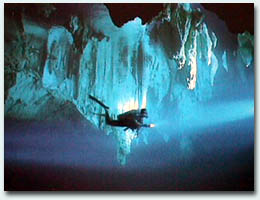
That finished our diving experiences. It was without a doubt the best diving we’ve ever done (better even than the Great Barrier Reef in Australia).
The next post will cover our last day and the adventure we had above the water. 🙂
–Jim
Day: September 3, 2005
Underwater Wonder of the World — Palau
Since Anna and I moved to Guam last year, we have become better acquainted with the underwater world.
This past week, we had the opportunity of a lifetime to travel to and SCUBA dive in the #1 Underwater Wonder of the World that is the Republic of Palau (at least as ranked by the Smithsonian).
Wow.
Ok, That about sums up the trip. No need to say anything else.
Alright, I will say a little more. If you are curious what the other wonders of the underwater world are though, here they are:
1. Palau
2. The Belize Barrier Reef
3. The Galapagos Islands
4. The Northern Red Sea
5. Lake Baikal
6. The Great Barrier Reef
7. The Deep Sea Vents
First, what is Palau? Good questions….it’s a small island nation in the southwest Pacific. In relation to Guam, it’s about 1000 miles to the southwest. Guam is 13 degrees north and Palau is 7 degrees north. So, as you can imagine the climate is rather similar. Although, we noticed less humidity, compared to Guam.
Palau has a similar history to most islands in the western Pacific. It was occupied by the Japanese in WWII, and liberated by the Allies. After the war, it joined the Trust Territory of Pacific Islands administered by the US. However, instead of eventually joining the Federated States of Micronesia, Palau chose to remain independent. In 1994, it was admitted to the UN, after signing the Palau Compact with the US (after a decade of debate). The compact assured virtual independence with the US providing economic aid and defense for the 20,000 inhabitants. Ironically, the issue that held up the approval was Palau’s desire to be the first nuclear weapon free state (including those carried on US warships/aircraft). That issue resolved, the main struggle now (as with many small islands) is developing a sustainable economy and infrastructure. While there is much to improve on, Palau has realized protection of their splendid natural resource is paramount to their future. As such, the people and government work to develop a compromise in harvest and protection of the underwater bounty surrounding the islands.
It’s interesting to note that there are more than 300 islands in Palau, only 17 nations have a smaller population. Palauans are a proud people with a proud history. It was fascinating interacting with them and viewing their world.
Before I get into our trip though, I will include some pictures taken by a photographer we met in Palau, and American named Kevin Davidson. He also took some video and photographs of us, but that’s the next story. So, while not taken by us (or even while we were there), they do a great job giving a glimpse at the beauty of the archipelago of Palau.
Here is an aerial view of one of the many islands….
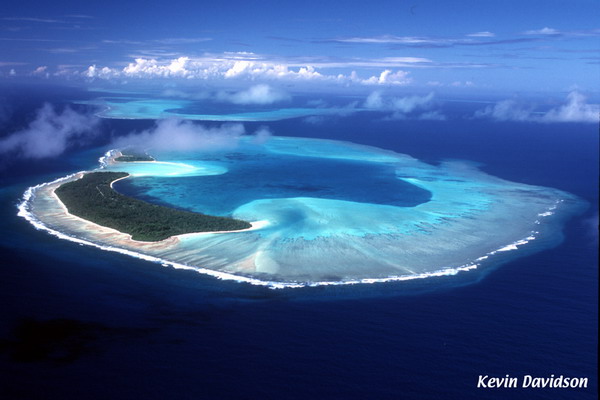
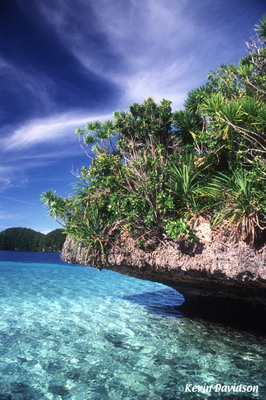
Some of the underwater inhabitants around the islands:
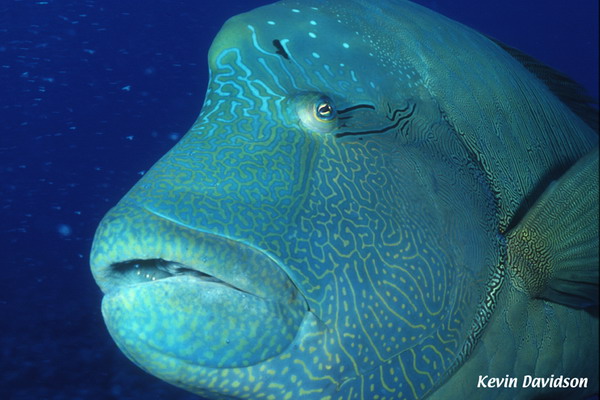
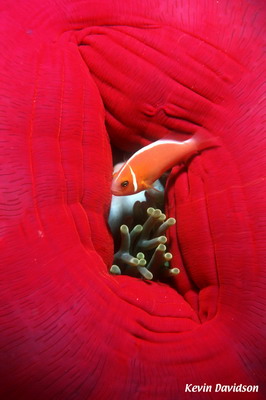
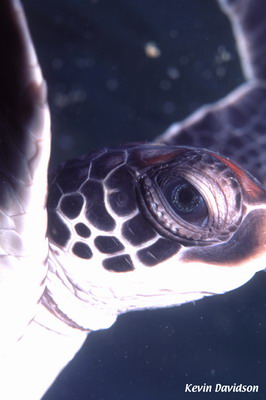
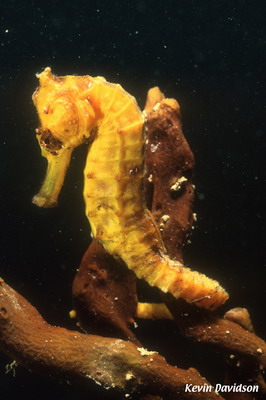
Yes, we saw plenty of his brethren.
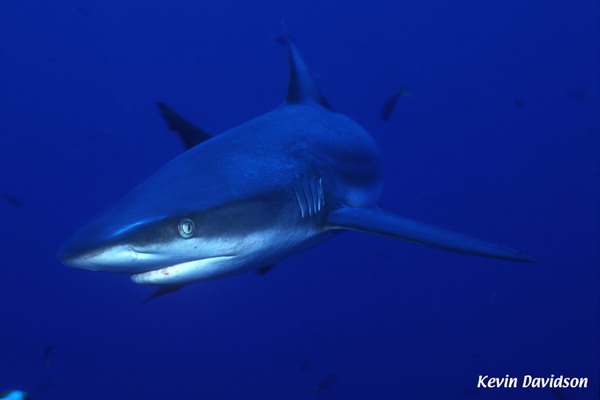
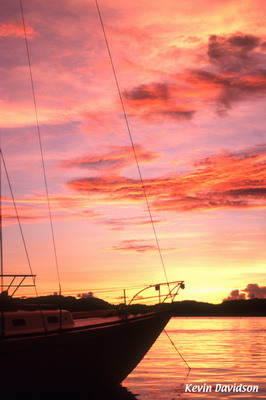
Ok, hopefully that whets your appetite, as the next post will detail our trip to Palau.
Until then.
–Jim
